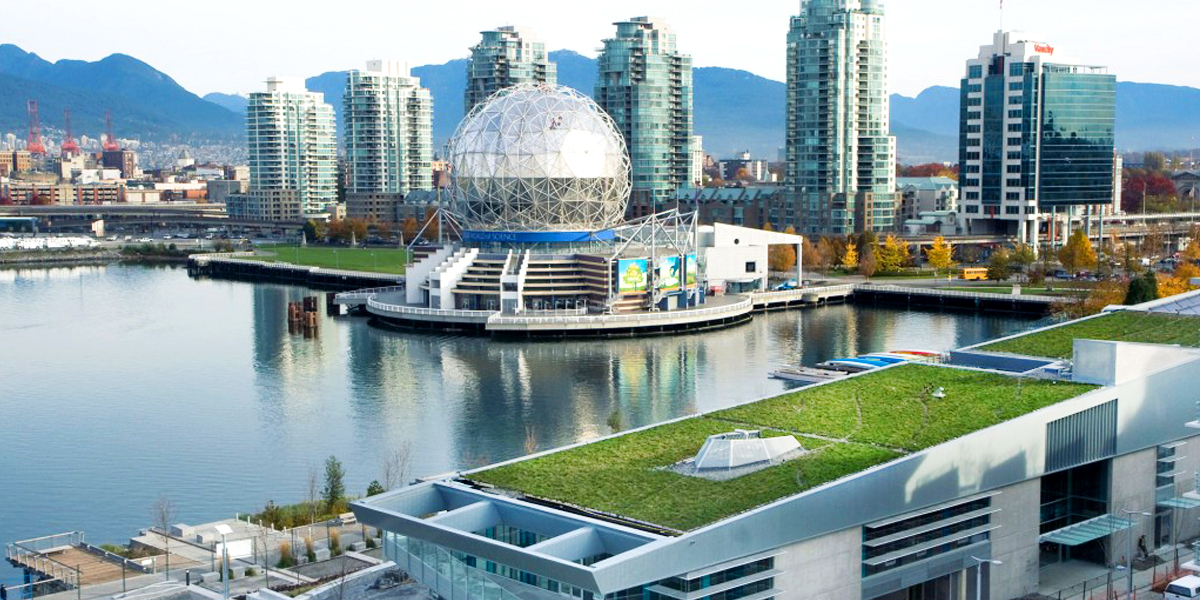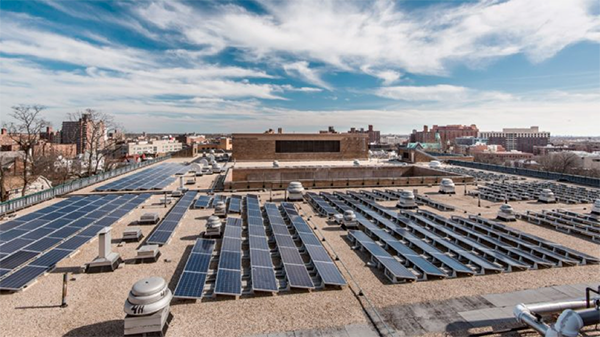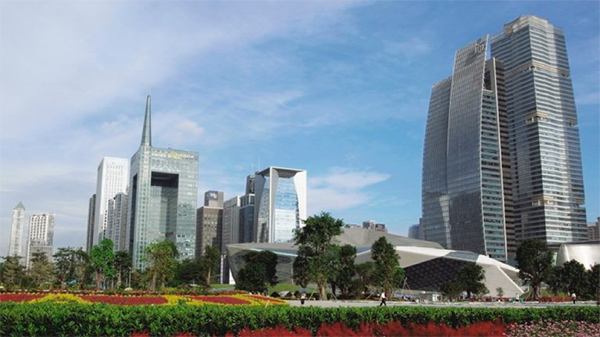

Vancouver, Canada.
The
climate crisis is a problem caused by humans that can be solved by humans. These three cities are proving it.
While a lot of media coverage around the crisis is doom and gloom, cities around the world are coming up with powerful solutions on the local level. Here’s how a Canadian city, an American city and a Chinese city are taking on climate action.
1. North America’s First Renewably Powered City
City: Vancouver, Canada

Vancouver’s ambitious vision to power the city entirely on renewable energy will help curb emissions from its two biggest emitters: transport and buildings.
Vancouver is the first city in North America to develop a renewable city strategy to derive 100 percent of the city’s entire energy needs from renewable sources by 2050. To achieve this goal, the city is prioritizing efforts around reducing emissions from its most polluting sectors, buildings and transportation and increasing the use and supply of renewables. In the transport sector, this includes measures such as the promotion of renewably powered car-sharing fleets and the development of standards to support renewably powered private vehicles. Simultaneously, retrofits of existing buildings and ensuring the grid energy supply is 100-percent renewable will spur the clean energy shift for the city’s building stock.
Underpinning the strategy is an innovative energy system model that maps energy demand across the year and by time of day, matching it with an energy supply model to identify the most economical ways energy demand can be met by renewable sources. In this way, Vancouver is using cutting-edge technology—employed for the first time by a municipality—to solve pressing energy concerns and guide plans for a 100 percent renewable future.
The Result: 80 percent reduction of greenhouse gas emissions, from 2007 levels, by 2050 due to the renewable city strategy.
2. Legal Ordinance for Solar-Powered Buildings
City: New York, New York

New York City’s government agencies are now legally required to assess potential
solar PV retrofits at all municipal buildings.
In 2016, New York City passed a law requiring local government agencies to assess all city-owned rooftops for solar photovoltaic (PV) potential, in order to support the city’s goal to install 100 MW of solar PV on municipal property by 2025. Agencies must report on factors including the potential reduction in energy use and greenhouse gas emissions, the financing of the project and whether buildings’ rooftops are suitable for a solar installation. In keeping track of the projects, the city will also take into consideration the financial savings accruing from CO2 emissions reductions in order to better reflect the value of the retrofits.
To date, the city has installed 8.8 MW of solar PV across 52 municipal buildings. Informed by the government agencies’ evaluations, New York City plans to develop a strategy to expand the initiative to 4,000 city-owned buildings, which include schools, hospitals, libraries, courthouses, firehouses, offices, police precincts, wastewater treatment plants and recreation centers and which will help the city reach its goal to reduce citywide greenhouse gas emissions 80 percent by 2050.
The Result: 35,000 metric tons of CO2 emissions will be reduced by solar projects by 2025.
3. Low-Carbon Megacity Encourages Green Growth
City: Guangzhou, China

Guangzhou is planning for an increasing population and rising demand for energy with a multi-sector, low-carbon plan for green growth, targeting industry, infrastructure and buildings.
Guangzhou, a megacity with a population exceeding 13 million, is still in a stage of rapid economic development and urban construction. In 2012, Guangzhou launched the Pilot Low Carbon City Implementation Plan in an effort to reduce greenhouse emissions through systematic measures in the growing city. The plan includes the elimination of outdated industrial capacity and equipment and the promotion of energy-efficient technologies and green, low-carbon buildings. Transport infrastructure is also being targeted, with a new public transport system mainly based on rail transit.
Both market mechanisms, such as limiting entry permits for high-carbon projects to control greenhouse gas emissions, and institutional mechanisms, such as stricter emissions standards, have been used to promote low-carbon development under the plan. Green industries have developed quickly in the city, with an added value of $4.2 billion in 2014, an 11.1 percent increase compared to the previous year. As a commitment to the plan, Guangzhou announced in 2015 it will reach its carbon emissions peak by 2020.
The Result: 35.9M tons of CO2 emissions reduced between 2010 and 2014.
Republished from the Cities100 guide (the work of Sustainia, C40 Cities and Realdania) with permission.
[facebook https://facebook.com/EcoWatch/videos/10154253959651479/ expand=1]

 233k
233k  41k
41k  Subscribe
Subscribe 